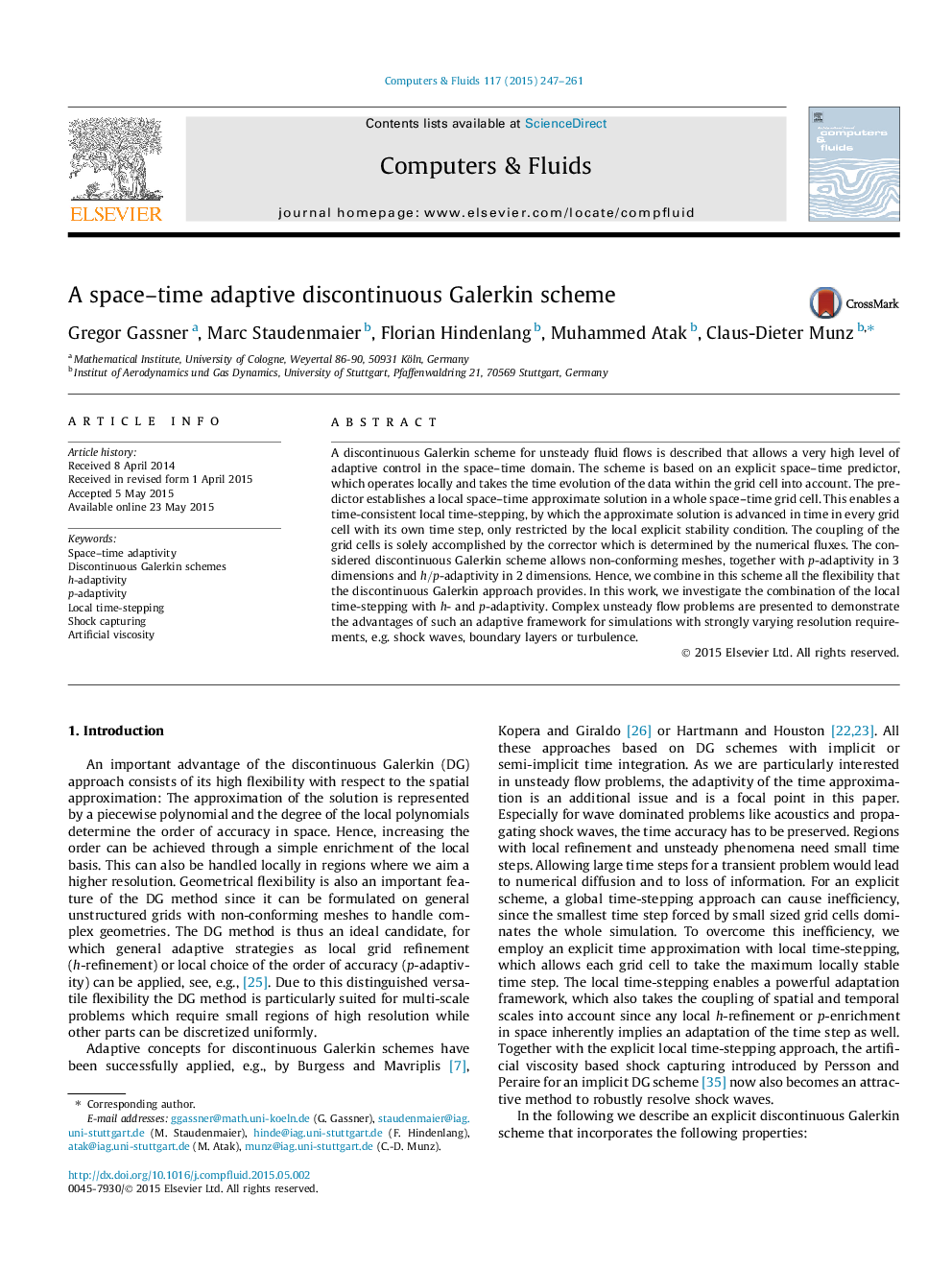| Article ID | Journal | Published Year | Pages | File Type |
|---|---|---|---|---|
| 761658 | Computers & Fluids | 2015 | 15 Pages |
•High order discontinuous Galerkin scheme in a space time formulation.•Local time-stepping and space–time refinement.•Polymorphic grid cells with hanging nodes.•Local basis enrichment and adapted time approximation.•Implementation and control of multiple adaptation techniques.
A discontinuous Galerkin scheme for unsteady fluid flows is described that allows a very high level of adaptive control in the space–time domain. The scheme is based on an explicit space–time predictor, which operates locally and takes the time evolution of the data within the grid cell into account. The predictor establishes a local space–time approximate solution in a whole space–time grid cell. This enables a time-consistent local time-stepping, by which the approximate solution is advanced in time in every grid cell with its own time step, only restricted by the local explicit stability condition. The coupling of the grid cells is solely accomplished by the corrector which is determined by the numerical fluxes. The considered discontinuous Galerkin scheme allows non-conforming meshes, together with p -adaptivity in 3 dimensions and h/ph/p-adaptivity in 2 dimensions. Hence, we combine in this scheme all the flexibility that the discontinuous Galerkin approach provides. In this work, we investigate the combination of the local time-stepping with h- and p-adaptivity. Complex unsteady flow problems are presented to demonstrate the advantages of such an adaptive framework for simulations with strongly varying resolution requirements, e.g. shock waves, boundary layers or turbulence.
